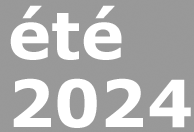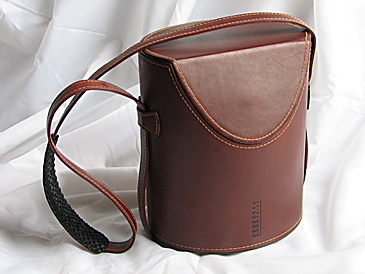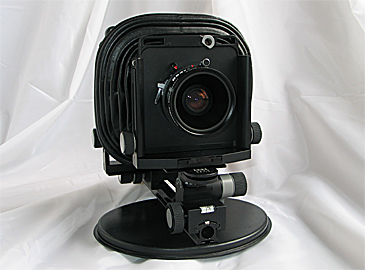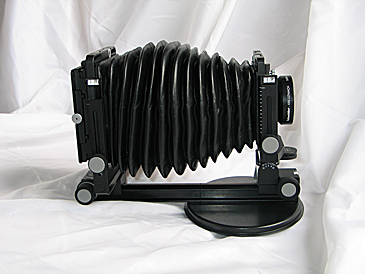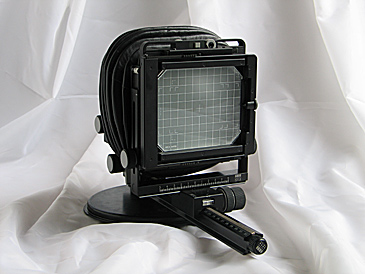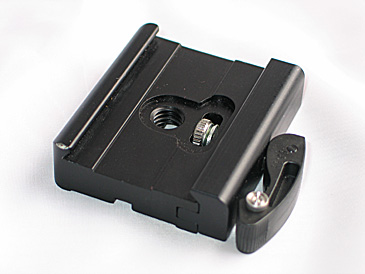|
|
|||||||||||||||||||||||||||
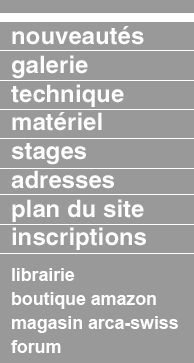
the author
Translation
|
The Misura, a question of measure...by Guillaume Péronne
"I am not an architecture photographer" said Holger Trülzsch1. I would likely take up this sentence myself, because it allows to re-consider this kind of photography in a different way. Architecture photography has to go beyond the mere representation of architectural subjects. It is important also to include the "territorial" aspect of architecture, to take the necessary distance in order to perceive the whole context, as widely as possible, since the real stakes of architecture photography can only be understood in those different scales. But let's talk about photographic equipment.
When I decided to become a professional photographer, My future LF camera should meet the following criteria: - possible shifts, drop and rise movements should at least be
equal to half the image format, After a careful examination of the current offer in view/technical cameras on the market, eventually I decided for the Arca Swiss Misura. Previously at the Nîmes French Large Format conference in June 2004 I had the opportunity to manipulate an Arca Swiss 6x9 F-Line with the Orbix optional device; the 6x9 shares with the misura a similar front standard. I was almost convinced, but I double-checked some technical details on the phone with Arca Swiss people: I was now sure that I could get 50 to 60 mm of total rise with the 55mm lens, and the standard Misura bellows !
Thanks to André Mouton from Taos Photographic (France)
Another striking impression is the compactness of the camera. To meet this requirement, Arca Swiss has made the following technical choices: a folding monorail; a front function carrier similar to the F-line except for the geared translation (on the misura there is no geared focusing movement in front); a new, simplified and very compact rear function carrier with a precise geared translation control, a built-in spirit level and a horizontal shift movement locked by a clamp. The front standard is the same as the 6x9 F-line standard and is equipped with the additional Orbix tilt, built inside the base of the standard. At rear, the misura features a newly redesigned 4"x5" standard which hardly exceeds the size of a conventional 4"x5" double cut film holder ! Between the front and the rear standard is attached one of the most important parts of the misura, which gives the camera most of its performance: a bi-conical, molded leather bellows, as flexible as top-quality fine leather gloves. Most 4"x5" view/technical cameras require an accessory bag bellows to allow comfortable movements with focal lengths shorter than 90mm. This is no longer necessary with the misura: by design, the leather bellows is different from conventional bellows and takes advantage of the front/rear asymmetry to collapse into a minimum space at shorter camera extensions. The bellows is molded and not pleated like conventional bellows. The manufacturing process eliminates a well-known weakness in counter-pleated corners of conventional bellows, pinhole formation due to wear. My understanding is that real leather is the only material capable of delivering such a level of performance in terms of achievable geometry and flexibility. I had noticed on other LF cameras that a poorly designed bellows actually ruins all the efforts in designing otherwise excellent camera frames and standards. Here in the misura, the bellows is really a major part of the camera.
Probably the most controversial technical point is the lack of rear tilts and swings. What are the actual limitations of this lacking feature, as far as I am concerned in my work as an architecture photographer? The only combination of movements that the misura cannot provide are high amplitude indirect rises, for example to capture an architectural detail located well above the camera, while preserving full perspective control with a long focal length. All other kinds of movements where perspective control is important, based on tilts and swings, can be achieved by substituting rear tilt and swing angles by equivalent angles applied to front movements, combined with generous front+back movements of shift, rise and fall. For example, the classical effect of foreground enhancement obtained by a rear tilt can be achieved by combining a front tilt with rise and fall movements plus a global tilt of the camera. |
||||||||||||||||||||||||||
|
|
|||||||||||||||||||||||||||
On assignment…In less than one minute, the camera is attached to the tripod and focused. This very fast setup allows to work quickly, either when light is changing fast or when operating in a sensitive environment. One could object that being quick is of little use in large format photography where a "slow approach" is often a deliberate choice; however I believe that quick operation in LF photography opens new opportunities, new subjects, for example when the photographer wishes to follow a more intuitive approach or where environmental conditions demand a fast job. The oval base plate built for the leather case offers a natural support for hands when setting the front controls. In this position, controls perfectly find their place in hands. The strapped leather case can stay in place hanging under the camera and can even serve as a carrying case for accessories, at least on windless days. Many photographers swear only by geared micrometric controls, but you should re-consider this attitude when you work with silky-smooth Arca Swiss manually driven shift and rise movements. Not only they offer an extremely precise manual setup, but they are in fact faster that geared movements. The photographer goes faster to the essential camera setup, and can precisely frame the subject within 1/2 millimetre. Tilts can be operated either through the classical base tilt built in the front function carrier, or with the Orbix movement, an extremely compact device which offers a very precise and fast self-locking axis tilt. The smoothness and precision of this mechanism are hard to describe with words; you should really experience it with your hands to understand it. But beware: doing so you are at risk of disregarding any other device in the future! Arca Swiss achieved an incredible challenge in manufacturing such a precision mechanism in a narrow space (10 mm of thickness, to be compared with competing devices offered by other manufacturers). The ground glass is equipped with a Fresnel lens, it is very bright even with short focal lengths. It is engraved for smaller metric format sizes 9x12, 6x9 and 6x7. The focusing screen is bright enough to allow under certain circumstances, to operate without focusing cloth, for an even quicker work. The overall rigidity of the camera is perfect, even at full extension: it is so rigid that the camera has shown me the lack of rigidity of my tripod ! As far as complaints are concerned, I would only express one: I regret that the manufacturer did not consider any conventional 1/4" or 3/8" threaded mounting hole; the only way to attach the camera to a tripod is through a quick-release clamp, to be ordered extra.
As a conclusion…The strong points of the camera are the homogeneity of performance, the excellent overall rigidity combined with movements of great amplitude available at all focal lengths. Movements are so smooth and precise that manual operation is a real pleasure, hence work is more efficient. Due to all those qualities, on assignment, the photographer can almost forget about the camera and concentrate on the essential task. The performance of the bellows, which allows more than 50mm of shifts and rise with a 55mm wide-angle lens, is a key point when considering the misura as a mixed 6x9-4"x5" view camera. Extrapolating this result to a 35 mm lens mounted on a recessed board would confirm this hypothesis that the misura is actually a combined medium/large format camera. But for such an extremely short focal length, a user's wish would be an additional shorter wide-angle bellows. A future accessory? The misura does not bring any real revolution in large format photography, but the mobility offered by this camera, at a very high level of performance, brings, to my opinion, a new factor of freedom to the photographer who no longer has to make an exclusive choice between performance and mobility. "Misura", in Italian litteraly means: measure in the sense of "measurement" (and nothing of course is more important in architecture that proper measurements), but there is also the idea of moderation and "happy medium". With the Misura camera, the photographer will neither be restricted to "half-measures" and has access to a full-performance tool, and he will neither be immoderate in tool size and weight: in other words, a "happy medium" large format camera.
Here is an image taken with the misura on a recent assignment. As usual, it is impossible to tell which camera was used to take the picture !
A few figures
Notes1Holger Trülzsch was born in 1939, his parents were architects. Trained in painting and sculpture in the Münich School of Fine Arts. he started as a sculptor, then he was a musician (he composed the music for the movie "Aguirre" by Werner Herzog), then a painter, eventually he discovers photography at the age of 30. In 1983-84, he takes photographs of the old Orsay train station in Paris before the building was renewed and transformed into the Orsay Arts Museum. Other photographic work include classical builings by Claude Nicolas Ledoux, and an important work on Marseilles.
Thanks to Emmanuel Bigler who answered many of my questions about the misura and thanks to Henri Peyre for taking pictures of the camera for this article.
dernière modification de cet article : 2004
|
|||||||||||||||||||||||||||
|
|||||||||||||||||||||||||||

